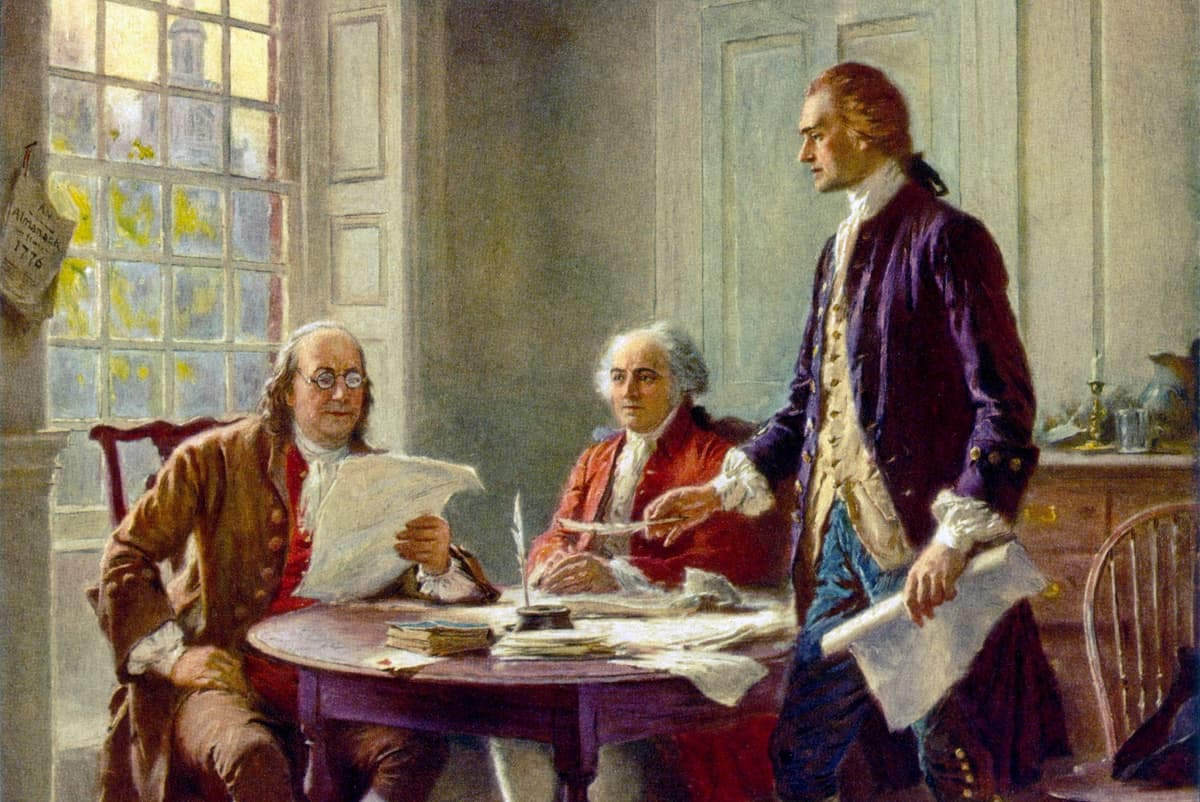Independence and Debt
They’ve been part of the American story going back to the revolution we celebrate today.

With a year to go to the 250th anniversary of American independence we’re of a mind to mark the crisis of debt — and the failure of the Congress to address the lack of reform. Instead it’s going to take on $3.3 trillion in new debt by 2034 and use our central bank to create new money to lend to, among others, our own government. We’re against shutting down the government, but also against failing to start the process of monetary reform.
This goes all the way back to the monetary breakdown that accompanied our war for independence that erupted in 1776. The Declaration freed the colonies from King George III’s tyranny. The young states took advantage of this new freedom to chart their own monetary policy. Yet the costs of fighting the war led the states to pursue a dangerous expedient: printing paper money with no backing in silver or gold.
The Continental Congress, too, racked up vast debts as it sought to keep America’s military in the field. Yet the Congress preferred to issue its own fiat paper money, the Continental Dollar, also lacking convertibility into specie, to pay its bills. The result of all this fiat money was an early example of hyperinflation. The government’s paper notes were soon derided for their worthlessness, giving rise to the expression “not worth a Continental.”
As early as 1779, the monetary system had collapsed and the economy reverted in part to bartering, with the central government imploring the states to send not money but goods like grain and hay to support the Army. The failures of this experiment in fiat money were fresh in the minds of the Framers when they wrote the Constitution. That’s why the parchment disallows states to “make any Thing but gold and silver Coin a Tender in Payment of Debts.”
States were also barred from issuing “Bills of Credit,” a de facto ban on state paper money. To the Congress went the power to “coin Money, regulate the Value thereof, and of foreign Coin, and fix the Standard of Weights and Measures.” In 1792, Hamilton’s Coinage Act put America on a specie standard. Dollars were defined in law as a set weight of gold and silver. Paper dollars were convertible at the rate of about a 20th of an ounce of gold.
Hamilton’s fiscal house-cleaning, too, assumed the states’ debts under the federal aegis, in a reminder of how the monetary crisis of the day was intertwined with a crisis of indebtedness. That’s echoed today as the abandonment of Hamilton’s constitutional dollar, defined in gold, ushered in a new era of fiat money in 1971. Since then, the national debt has nearly tripled as a share of economic output, threatening to overtake the gross domestic product.
Under the gold standard, the discipline of convertibility required the government — and central banks — to eschew budget deficits. The age of fiat money lifted that restriction, seeming to remove any consequences for America’s fiscal binge. Yet there are warning signs. The head of the Congressional Budget Office, Phillip Swagel, for one, cautions that our “unprecedented” debt runs the risk of a “Liz Truss-style market shock.”
That’s a reference to the meltdown that struck Britain when the former prime minister proposed a pro-growth, supply-side tax cut, only to find that debt markets and the International Monetary Fund insisted that Britons had borrowed too much already. France, too, is finding that its high debt burden is preventing it from borrowing to boost its defense spending at a time when it is trying to meet new threats from Russia.
So, Mr. Swagel cautions, America could find that its freedom to set its own policies could be constrained by the national debt. Failing to tackle the twinned crises of debt and fiat money risks taking power from the American people and handing it over to our creditors. It’s hard to see the disadvantage for President Trump — who can act where others shrink — in starting a process of reform even while boasting of pro-growth fiscal policies in the BBB.

